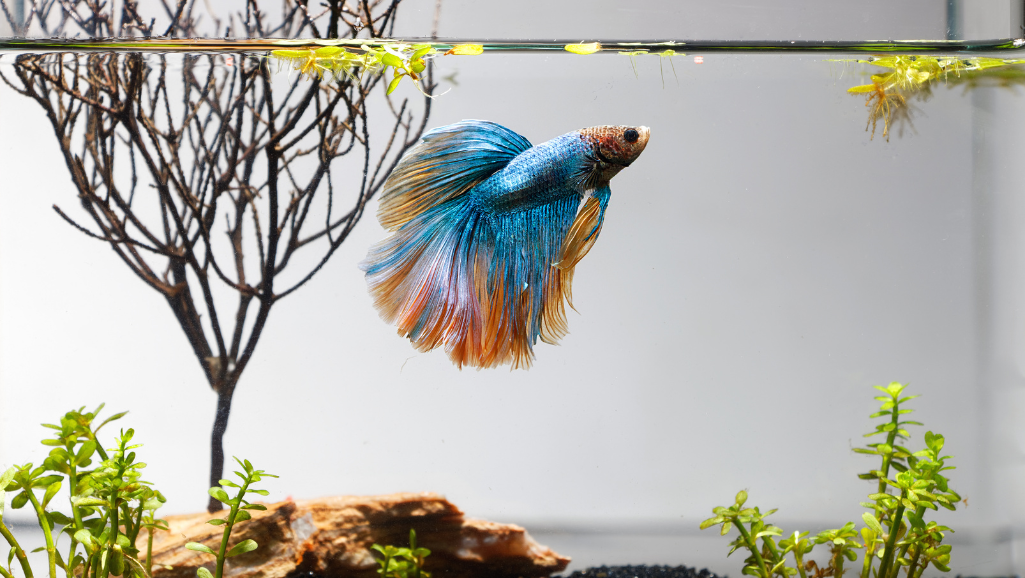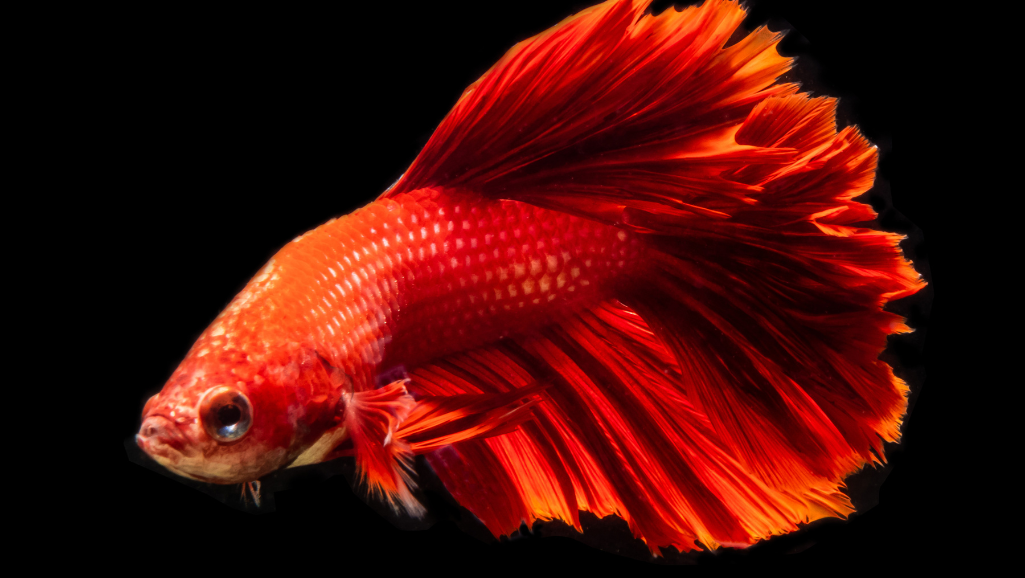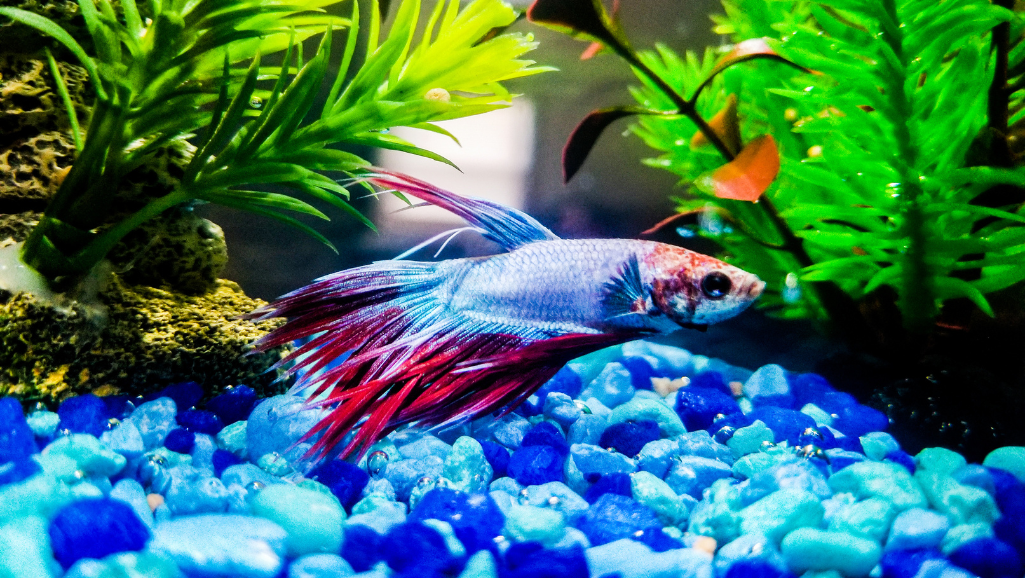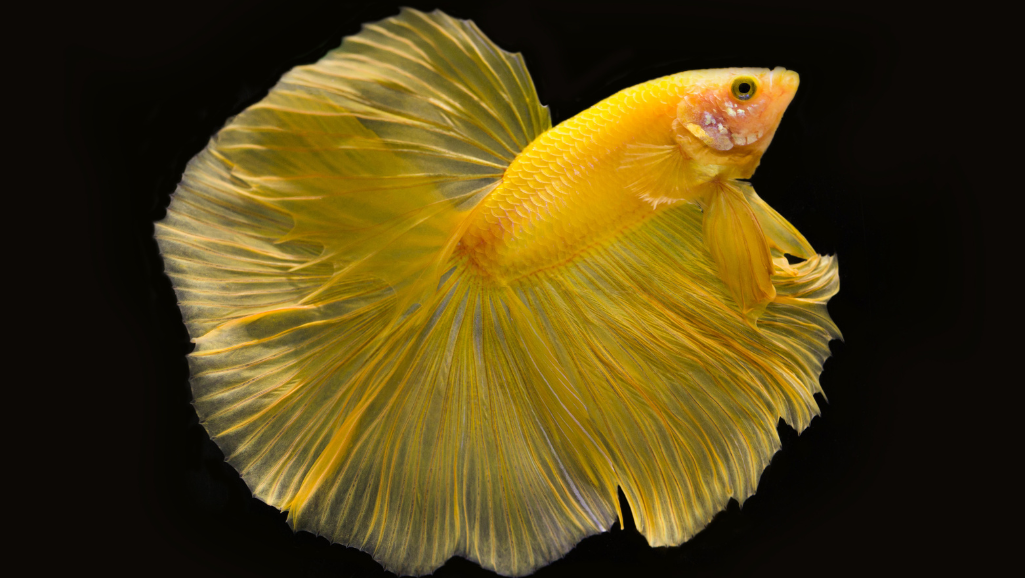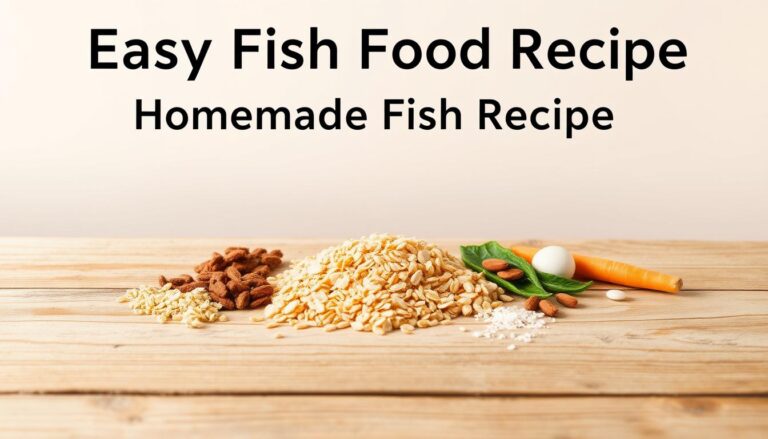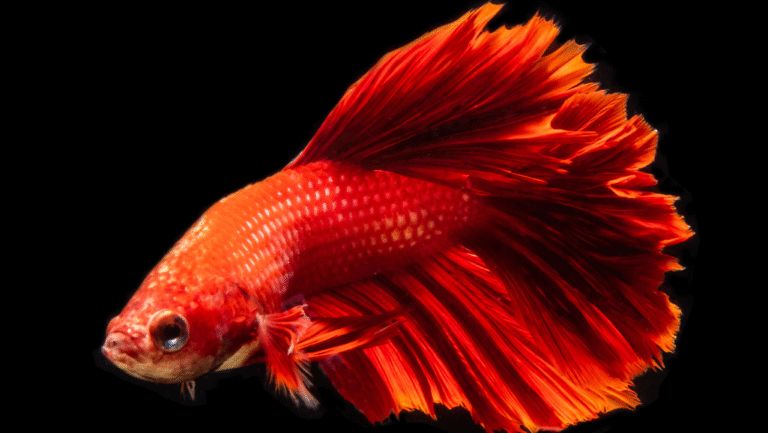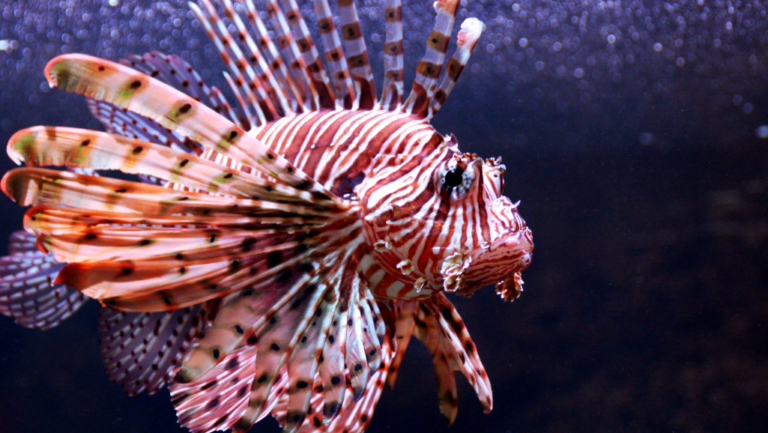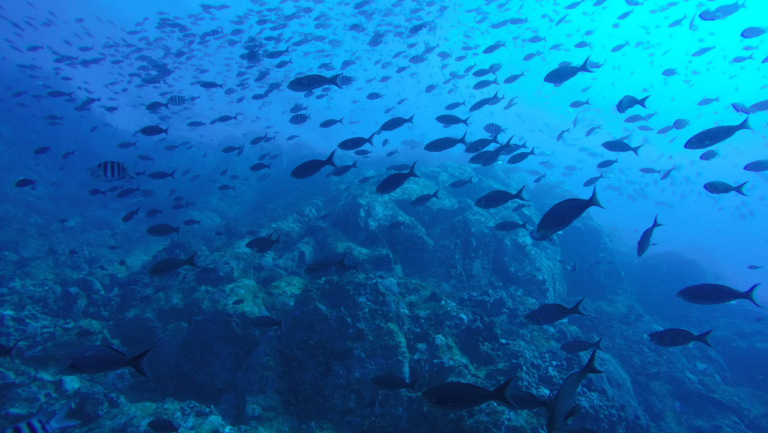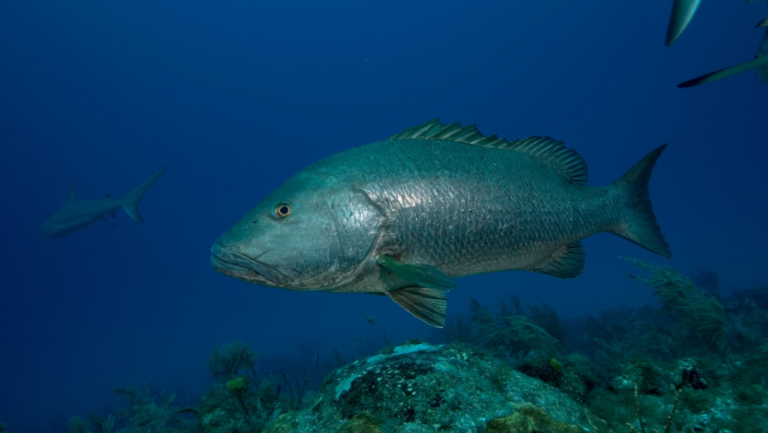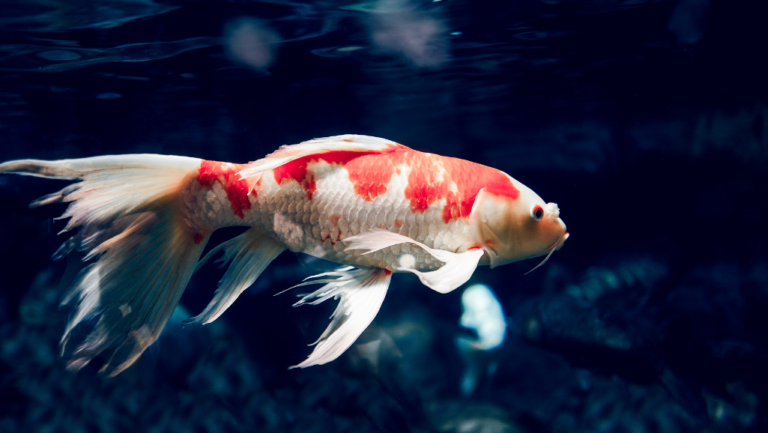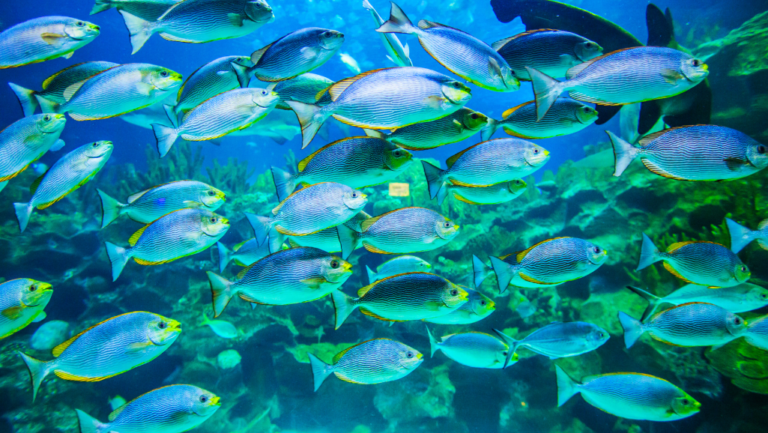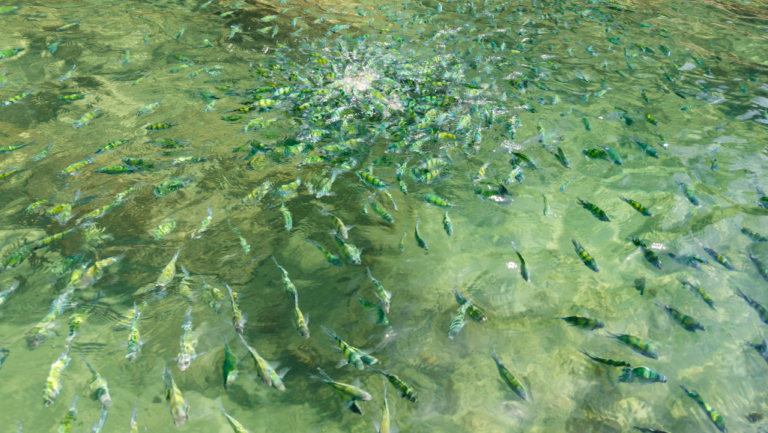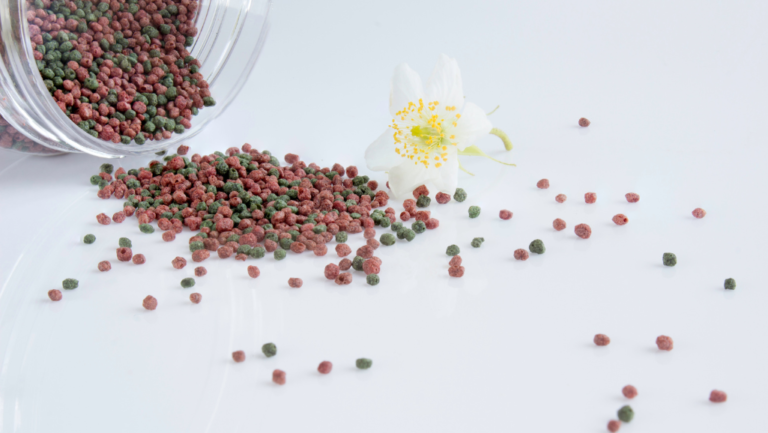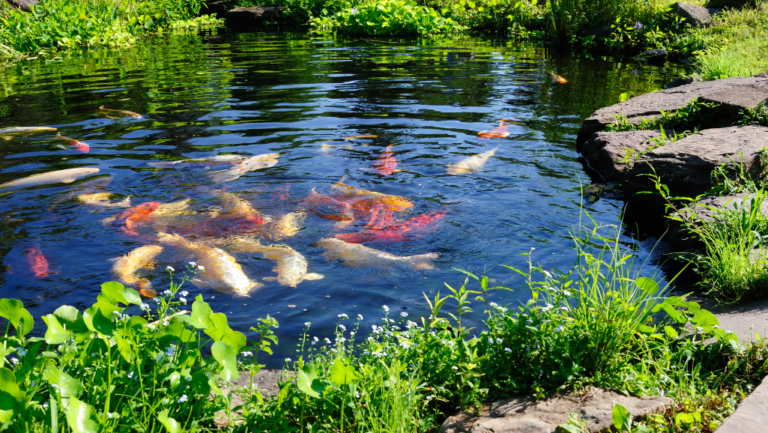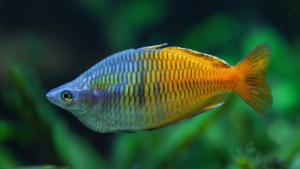Proper betta fish care is key to keeping your pet healthy and long-lived. Knowing how much to feed your betta is a big part of caring for them. This guide will help you understand the best feeding schedule and what your betta needs to stay healthy.
Betta fish come from the warm waters of Southeast Asia. They eat small insects, larvae, and zooplankton in the wild. So, they need a diet rich in protein to do well in captivity. Feeding them too much can cause problems like obesity and stomach issues, so it’s important to feed them right. A betta’s diet should be carefully managed, considering their small stomach, which is roughly the size of their eyeball, meaning they fill up quickly.
Adult betta fish should get about 1.8 grams of food each day. You can split this into two meals or give them one big meal. The number of pellets you give them can change based on the size of the pellets and how old your betta is. But, a good rule of thumb is to give them 4 to 6 pellets a day.
Key Takeaways:
How Often to Feed Betta Fish.
Betta fish need a diet rich in protein, like their natural diet in the wild.
Feed adult bettas about 1.8 grams of food daily, divided into two meals.
Aim for 4-6 pellets per day, adjusting based on pellet size and betta’s age.
Keep the water temperature (78-82°F/26-28°C) right for digestion.
Change the fish food containers every 6 months to keep the food fresh.
Understanding Betta Fish Feeding Requirements
To keep your betta fish happy and healthy, knowing their diet is key. In the wild, they eat mostly insects, which are rich in protein. They need at least 30% protein in their food, with 35% being the best. It is also important to monitor extra food that may remain uneaten, as it can lead to health issues like bloating and digestive distress, and degrade water quality if not removed promptly.
For a betta fish diet, live, frozen, or freeze-dried foods are best. Foods like bloodworms, brine shrimp, and daphnia are great. They match their natural diet well. But, high-quality pellets with dried meats are also good, as long as they have enough protein for bettas.
Betta Fish Diet in the Wild
In the wild, betta fish mainly eat aquatic insects. These include:
Bloodworms
Brine shrimp
Daphnia
These insects give bettas the proteins and nutrients they need. Knowing their natural diet helps you choose the right food for your betta.
Nutritional Needs of Betta Fish
When caring for your betta fish, their nutrition is vital. Here are some important points:
Bettas need at least 30% protein in their diet. The best pellets and flakes should have more than 40% protein.
Baby and breeding bettas need even more protein and fat to grow and develop well.
The vitamin C in betta fish food starts to lose quality after six months. So, it’s crucial to store food well and replace it often.
A betta fish’s stomach is about the size of its eyes, making overfeeding potentially fatal.
By knowing your betta’s nutritional needs and feeding them a balanced diet, you can help them live a long, happy life.
Establishing a Feeding Schedule for Your Betta
Keeping your betta fish healthy means having a good betta fish feeding schedule. Knowing what your betta needs and when to feed it helps. This way, your pet stays colorful and lively. Additionally, a lower tank temperature may cause the fish to consume less food to prevent digestive issues.
Frequency of Feeding
Betta fish need to eat at least twice a day. Meals should be 6-8 hours apart. Some owners give 4-5 small meals, 2-6 hours apart. This is like their natural eating habits and keeps their digestive system healthy.
Baby bettas, or fry, need to eat more often. They should have 3-5 meals a day, with small portions. If you notice your betta gaining weight, it may indicate overfeeding, and you should adjust their feeding habits accordingly.
Factors Affecting Feeding Frequency
When it comes to determining the optimal feeding frequency for your betta fish, several factors come into play. Understanding these factors can help you tailor a feeding schedule that meets your betta’s specific needs and promotes their overall health.
Portion Sizes
For portion sizes for bettas, think of an amount the size of their eyeball. This feeds them enough without overdoing it. Adult betta meals might include:
3 pellets or brine shrimp
A similar amount of gel food
Small amounts of live or frozen foods like bloodworms, white worms, or daphnia
Feeding too much can harm water quality and your betta’s health. So, it’s important to give the right amount and not feed more than twice a day.
Timing of Meals
Being consistent with meal timing for bettas is key. A regular schedule helps your betta know when to eat. It also makes your bond stronger. Try to feed at the same times each day, like morning and evening.
Every betta is different. Watch how your betta acts and adjust their food schedule and amounts. This keeps them healthy and happy.
Choosing the Right Food for Your Betta Fish
Keeping your betta fish healthy means choosing the right food. There are many types of betta fish food out there. It’s important to know what your fish needs and make sure they get a balanced diet. Betta fish have different dietary needs compared to other fish, so it’s crucial to provide a betta-specific diet.
Types of Betta Fish Food
Betta fish can eat live food, pellets, flakes, and freeze-dried treats. Live food for bettas like bloodworms and brine shrimp is great because it’s like their natural diet. But, live food can sometimes carry diseases. Frozen or freeze-dried food is safer but still good.
Pellets for bettas are easy to use and popular. Choose pellets with at least 30% protein. Flakes are less appealing but can be given sometimes for variety. Feed your betta 2-4 pellets or a small pinch of flakes twice a day.
Live Food vs. Pellets or Flakes
Live food is best for betta nutrition, but good pellets and flakes can also be part of a balanced diet. Here are some top choices:
NorthFin Betta Bits: 45% protein, 16% fat, 4% fiber, 9% moisture, 10% ash
New Life Spectrum Betta Formula: 37% protein, 5% fat, 4% fiber, 10% moisture, 8% ash
Omega One Betta Buffet Pellets: 40% protein, 5% fat, 2% fiber, 8.5% moisture, 8% ash
Freeze-dried treats like bloodworms and brine shrimp can be given 2-3 times a week. Here are some good options:
Omega One Freeze-Dried Bloodworms: 55% protein, 3% fat, 5% fiber, 5% moisture
San Francisco Bay Brands Freeze-Dried Mysis Shrimp: 67.3% protein, 5% fat, 2.8% fiber, 8.4% moisture, 10.8% ash
Hikari Freeze-Dried Daphnia: 66% protein, 9% fat, 5% fiber, 7% moisture
Ensuring Nutritional Balance
To keep your betta healthy, feed them a mix of meat and plant-based foods. Their stomachs are small, so don’t overfeed. Remember, bettas can survive without food for a day or two, but regular feeding is best.
Keeping your betta’s tank clean is key to avoiding ammonia buildup and keeping them healthy. Clean their tank often and keep the temperature between 76-81 degrees Fahrenheit for a healthy metabolism.
By picking the right types of betta fish food and feeding them well, your betta will stay healthy and colorful.
How Often to Feed Betta Fish for Optimal Health
To keep your betta fish healthy and happy, feed them the right amount at the right time. Optimal betta feeding frequency is key for their well-being. Bettas need a lot of protein in their diet, with about 35% protein in their food.
It’s important to have a regular feeding schedule for your betta. Adult bettas need food once or twice a day. Each meal should be about the size of one of their eyeballs. Feeding small meals often is better than one big meal to avoid overfeeding.
Overfeeding bettas can cause big health problems. These include a big belly and feeling very tired. To avoid this, feed your bettas twice a day for a couple of minutes. Give them high protein treats like freeze-dried and frozen foods only once or twice a week.
“A well-rounded diet for bettas can prevent nutritional deficiencies and promote a robust immune system.”
Water temperature is also important for betta fish health. Cold water slows down their metabolism. So, adjust how much food you give them if the water temperature changes. Also, after six months, the vitamins in their food start to go down, so replace it often.
By following these tips and feeding your betta quality food like Hikari Betta Bio-Gold, Aqueon Betta Food pellets, and Tetra Bettamin, they will get the best nutrition. This will help them stay healthy and happy.
Conclusion
It’s key to feed your betta fish well and on time for their health and long life. Knowing what your betta needs and giving them a balanced diet is important. Betta fish love meat, so they need lots of protein and other nutrients.
Feed your betta fish just what they can eat in 2-3 minutes, twice a day. Make sure the food is about the size of their eye. This way, they eat it all in 5 minutes to avoid eating too much. It’s better to give them small meals throughout the day, like at dawn and dusk.
Give them high-quality pellets and sometimes live or frozen foods for variety. But, don’t overfeed them. Too much food can make them fat, sick, or even cause them to stop swimming.
Stick to a regular feeding schedule, including days off from food. Watch how your betta acts and adjust their food as needed. This helps avoid problems like bloating or feeling tired. Also, keep the water clean and fresh for their health and appetite.
By giving your betta a good diet, regular meals, and a clean home, they’ll be happy and healthy. Remember, caring for a betta is more than just feeding them. It’s about creating a great environment and watching over their health. With the right care, your betta can live a long, joyful life in your tank.
FAQ
How often should I feed my betta fish?
Feed your betta fish at least twice a day. Make sure meals are 6-8 hours apart. If you prefer, you can give 4-5 smaller meals, spaced 2-6 hours apart. This helps your betta know when to expect food.
What is the ideal diet for betta fish?
In the wild, bettas eat insects like bloodworms and brine shrimp. They need a diet rich in protein, at least 30%. Live, frozen, or freeze-dried foods are best. You can also use pellets with dried meats.
How much food should I give my betta per meal?
Feed your betta as much as fits inside their eyeball. This is usually 2-7 pellets, depending on size. Just remember, it should be about the size of their eyeball.
What is the best type of food for betta fish?
Live foods like bloodworms are great but can be risky if not sourced well. Frozen or freeze-dried foods are safer alternatives. Always choose pellets with at least 30% protein.
How can I ensure my betta stays healthy?
Keep the tank temperature between 78-82°F (26-28°C). This is key for your betta’s health and digestion. Don’t overfeed, as it can harm your betta. Offer a varied diet with lots of protein and adjust the amount based on your betta’s age and size.
